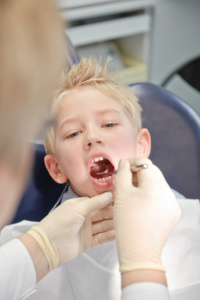
Making your children feel comfortable at the dentist can be trying. Kids dentists have their job cut out for them. Keeping anxious and scared children calm during an important dental procedure is essential for everyone’s safety. If a child makes any sudden movements, it could lead to injuring the dentist and the child. Luckily, there is a solution.
Over time, dental professionals have received extensive training and have become better versed in the proper ways to employ, monitor, and moderate dental sedation. In fact, this practice is becoming more widespread with up to 250,000 pediatric dental sedations performed every year. But why is this necessary?
Traditional Techniques and When They Don’t Work
There are many ways a children’s dentist might attempt to assuage a patient’s anxiety. Sometimes they are effective, and other times they are not. Here are some examples.
- Using Positive Language
The easiest and most common way kids dentists prepare anxious patients is by using words like ‘sugar bugs’ instead of ‘bacteria’. Dentists also encourage kids by explaining how good their teeth will feel afterward, and how they were very well behaved throughout the process.
- Distractions
If you’ve ever noticed the unnatural amount of brightly colored toys, pictures, and even wallpaper in pediatric dentists offices, know that they aren’t there for fun. They are there to captivate the children’s attention, making it easier to perform dental work.
- Systematic Desensitization
If the child has an aversion to any particular equipment, some dentists will show it to them, explain everything about it and what it’s used for, and have the kids hold the instrument. This will familiarize and desensitize them to their preconceived fears associated with the tool.
These are all great strategies, but sometimes still prove ineffective. Whatever the reasons, you can’t fault a young child for being afraid of the dentist. In cases of severe anxiety, the option of pediatric dental sedation is great to have. The sedation options also range from conscious, but sedated, to completely unconscious. The sedation strategy will coincide with the level of anxiety presented. In the end, this will help kids grow up not fearing the dentist, and make everyone’s lives easier.
